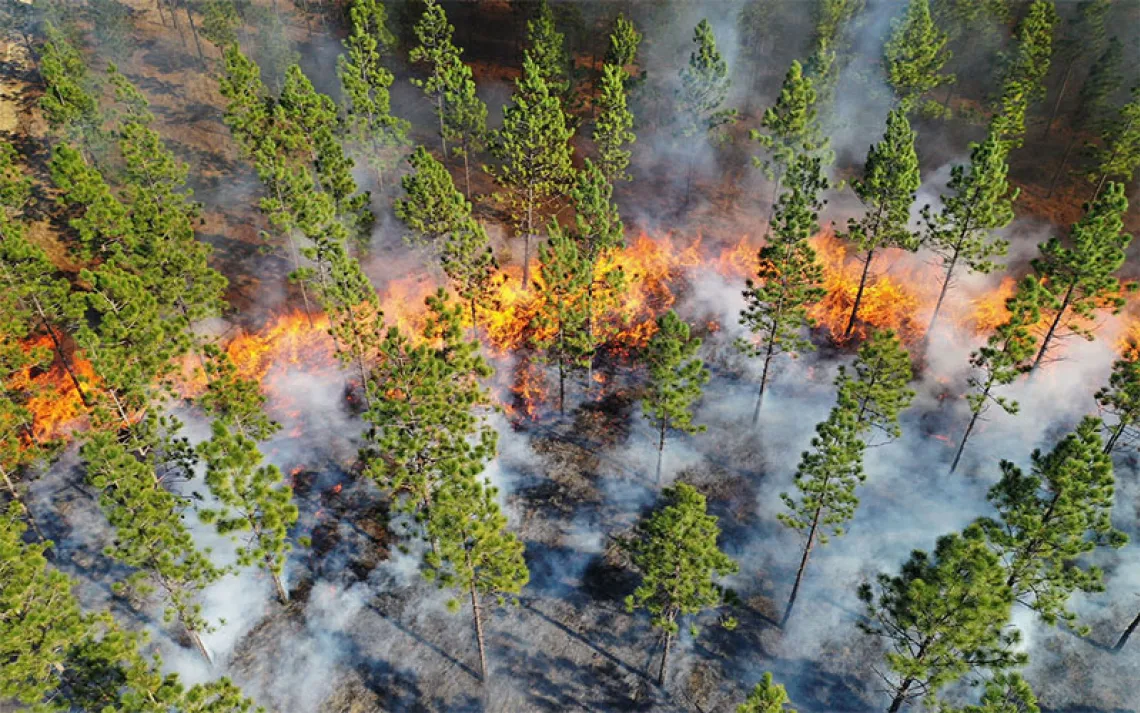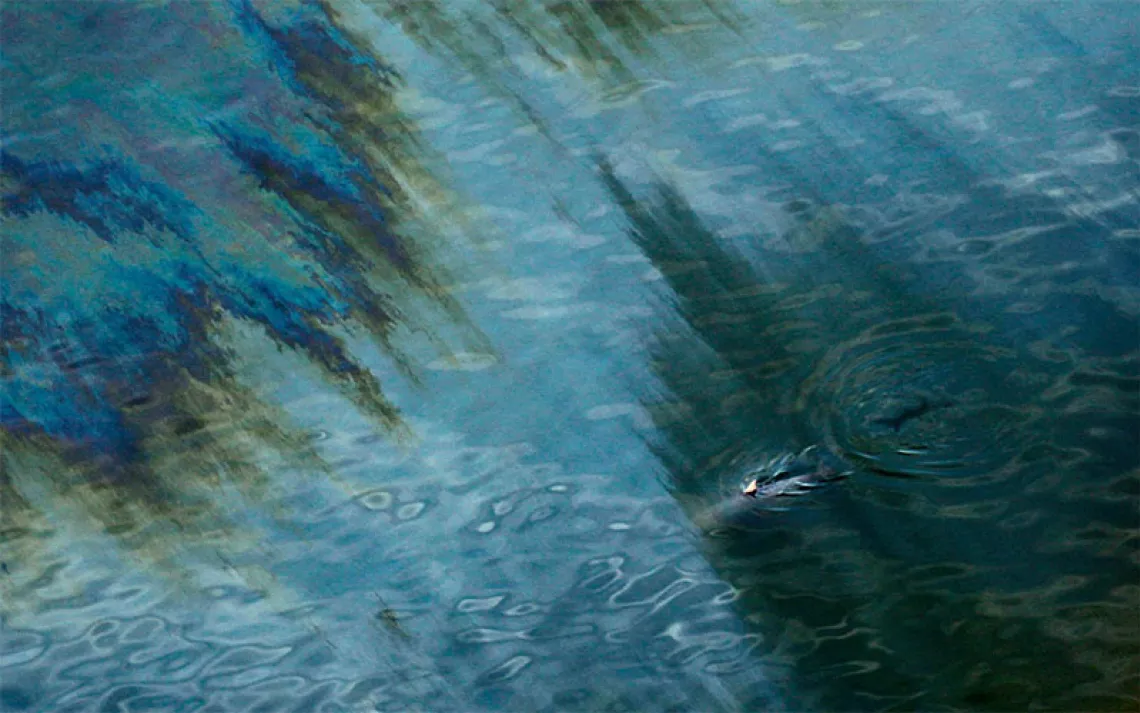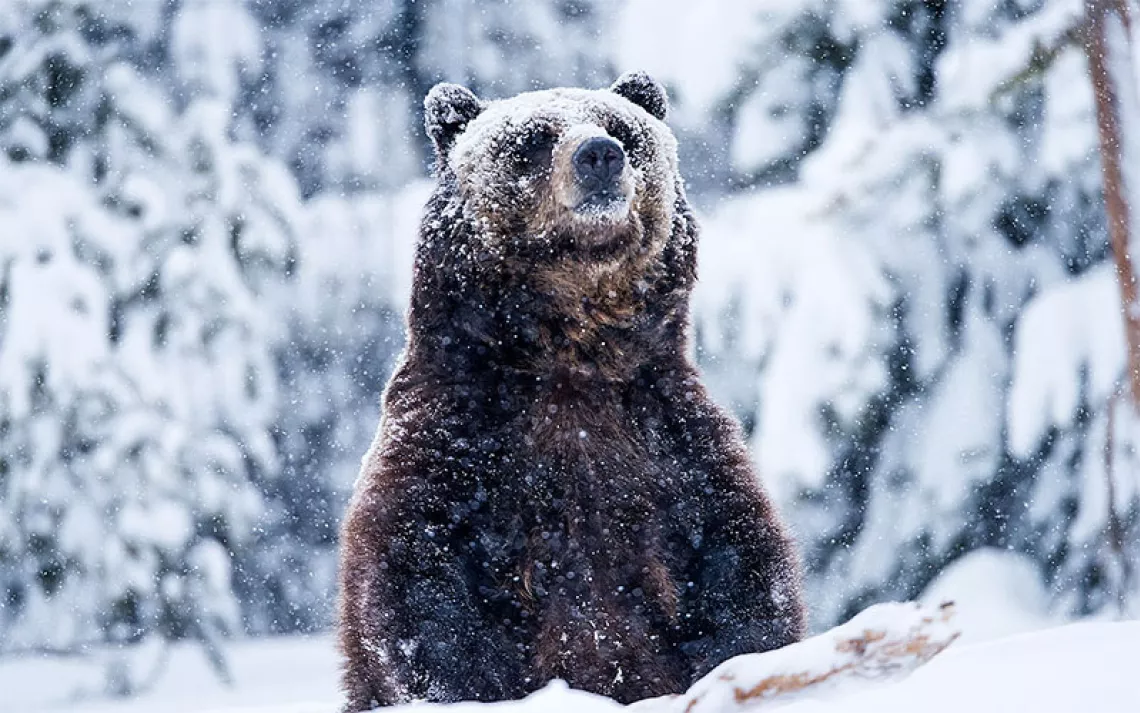How Leading US Conservationists Manage to Hold On to Hope
Tips from environmental leaders on staying optimistic in the midst of the climate and extinction crises

An autumn sunrise in Ukraine. | Photo by den-belitsky/iStock
When I was a small girl, I loved leafing through big encyclopedias about animals. I could spend hours looking at glossy pictures of orangutans, polar bears, and turtles, imagining adventures in the jungle or learning about the great migrations of African savannas. As an adult, I do everything possible to protect nature, including writing about successful conservation efforts, hosting a podcast about solutions to our current climate and extinction crises, donating money to cleaning up rivers, and planting trees.
Though it feels satisfying to play a part, deep inside, I know this isn’t enough to stem the tide of biodiversity loss. I know that I won’t see those beautiful never-ending lush rainforests on Borneo because they’re rapidly being converted to palm plantations and that hundreds of species will be wiped out by the time my kids finish high school. But I’m not the only one feeling this way. According to a survey of 10,000 children and young people (aged 16 to 25 years) done by an international team of scientists, young people across the globe grapple with feelings of eco-anxiety and despair.
It’s important to acknowledge the reality of climate and extinction crises, and some grieving naturally occurs. But doom-and-gloom fantasies can be detrimental to progress. That type of a negative feedback loop can lead to a resignation from opportunities to help, or to the thought that individual contributions don’t count. According to some of the world’s leading conservation scientists and environmental activists, individual action can help and in many cases is very needed. Here’s how three important figures in the environmental space overcome feelings of grief and maintain hope when they think of the planet’s future.
Look for Bright Spots
As Stuart Pimm, an expert on biodiversity at the Doris Duke Chair of Conservation Ecology at Duke University, notes, it’s thanks to the work of thousands of conservationists worldwide that we’re expanding the world's protected areas on land and in the ocean. While 30 years ago, very little of the planet was protected, protected areas now cover 17 percent of the earth’s surface, and in 2022, 195 countries agreed to protect 30 percent of land and ocean by 2030 at the United Nations Biodiversity Conference (COP15).
One can argue that not all areas are protected as well as they could be, but conservation is a work in progress, Pimm, who is also the founder of SavingNature, said. “We're learning the craft of conservation, and we're getting better at it. We’re learning how to manage wildlife, rescue populations, reintroduce species to places where they had gone extinct, control invasive species, and also prevent poaching. That's what gives me hope!”
While Pimm remains optimistic about how much we can do, he warns about the extraordinary amount of disinformation put out both by people who deny the climate and extinction crises and by big conservation organizations. There is no question that species are going extinct, but there's also plenty of evidence that conservation actions are working. A good example is wetland birds in North America and Europe, which are doing much better than 30 years ago. Not only are their habitats well-protected, but hunting bans have prevented over-exploitation. There are other wildlife species where protection has greatly increased their numbers in the US as well, including bald eagles, swift foxes, Louisiana black bears, and trumpeter swans.
Pimm’s message is clear: It's not all good news but it's not all bad news either. His advice is twofold. One, don’t trust every eye-catching headline about how everything gets lost, and instead, do your own due diligence on the source. Two, get involved in or support the work of local grassroots conservation organizations. Nonprofits, educational institutions, and local government agencies tend to provide reputable information and have real-world activities to participate in that can help contextualize eye-catching news and global statistics.
Find Balance
While Pimm remains optimistic about the future, Richard Heinberg, an environmental journalist, activist, and educator who has written 14 books on energy and environmental sustainability crises, has a somewhat different opinion on hope.
“If we define hope as a belief that the world is going to be better in the future … then I’m not hopeful. If the 20th century was all about a faster and bigger economy, the 21st century will be mostly about coming to terms with environmental limits. And that’s not always fun. It means degrowth, resource wars, and altering our lifestyle so that it fits with what nature can provide in the long-term.”
Currently, the earth is supporting a population of 8 billion people (a quadruple increase over the last century) and by the end of the century, the UN expects that we’ll add 2.4 billion people to the planet. The problem is we’re already consuming about 70 percent more resources than the earth can sustainably provide (a phenomenon called “overshoot,” which first began around 1970). In addition to that, if we want to feed a bigger and wealthier population, food production should increase by 70 percent.
Heinberg, who is one of the world’s foremost advocates for a shift away from our current reliance on fossil fuels, points to the fact that believing that we can maintain our current unsustainable lifestyle forever is a false hope.
“Young people feel anxious because they are likely to live in a degraded world and be less well-off than their parents. That’s not a happy prospect,” Heinberg said. “If we can help them to channel this anxiety toward taking action, then that could be a good thing—whether it’s abandoning our consumerist way of life, saving a particular species, or building local resilience.”
Feeling anxious about the future is totally natural. Even Heinberg confesses to sleepless nights when he wonders about the future on the planet. What’s important is to find constructive ways to deal with these feelings. He says maintaining a psychological equilibrium, or a balanced understanding of the motivating forces that drive behavior, helps.
For him that means finding the right balance between working on global issues, such as writing about climate change policy, and cultivating hobbies, like playing music and gardening. This creates a sense of fulfillment that often counterbalances pessimism about the enormity of the varying environmental crises affecting the world today.
According to Heinberg, politicians, scientists, educators, and environmental activists need to have a realistic view of what can possibly happen but at the same time have a sense of duty to create the best possible outcome given the circumstances.
Get Involved
Florence Blondel, an environmental and global justice campaigner working for Population Matters (a UK-based global nonprofit that addresses population size and its effects on environmental sustainability), shares Heinberg’s concerns about the future of the planet, but on the whole stays positive. Having grown up in a large family in rural Uganda and having reported widely on reproductive health issues, Blondel knows how important it is to support women to achieve reproductive and economic freedom.
“On the one side, I’m optimistic because many individuals are making environmentally conscious choices, from being childfree and having smaller families to becoming vegans,” Blondel, who reported widely on the intersection between family planning, girls’ education, and nature conservation, said. “On the other, there’s biodiversity loss, poverty and restrictive reproductive health policies. The fact that almost half of all pregnancies globally, about 331,000 per day, are unintended does leave me in despair.”
That’s why Blondel is actively involved. She’s now volunteering for Dave Gardner, a US presidential candidate who wants to address US ecological overshoot and ensure that modern contraceptives are readily accessible to everyone who needs them at no cost. She also launched her own project called Flowready, which helps young girls in Uganda to learn more about menstruation and get ready for their period.
“What motivates me to keep on going is the increasing number of people who are recognizing the intricate connections between human rights, poverty alleviation, environmental conservation, and population growth,“ Blondel said.
As it has become clear by now, Pimm, Heinberg, and Blondel all recognize the gravity of our current climate and extinction crises, but instead of passiveness they choose to be actively involved in nature protection. As Richard Heinberg said, “I don’t imagine that what I’m doing personally is going to turn away the tide and make all the difference. But I like to think that it may make a little difference to some people, and that’s what keeps me going.”
Making a little difference is probably the key to combatting eco-anxiety. Instead of being hopeless about not being able to change the big things—for example, fixing climate change—it’s a good idea to pick a specific cause (be it advocating for women’s reproductive rights or protecting a nearby watershed), set a realistic goal (determine how much time you can dedicate to it in the long-term), and just get involved. The important thing is to do something, even if it’s just something small.
 The Magazine of The Sierra Club
The Magazine of The Sierra Club



